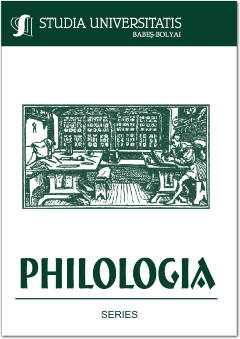REGARD COMPARATIF SUR LES ENQUÊTES DIALECTALES ROUMAINES : DES QUESTIONNAIRES DU MUSÉE DE LA LANGUE ROUMAINE À L’ALR I ET À L’ALRR – TRANSYLVANIE
COMPARATIVE EXAMINATION OF THE ROMANIAN DIALECTAL INQUIRIES: FROM THE QUESTIONNAIRES OF THE ROMANIAN LANGUAGE MUSEUM TO ALR I AND ALRR ‒ TRANSYLVANIA
Author(s): Rozalia ColciarSubject(s): Theoretical Linguistics, Historical Linguistics, Sociolinguistics, Romanian Literature
Published by: Studia Universitatis Babes-Bolyai
Keywords: linguistic questionnaire; correspondence inquiry; direct inquiry; linguistic atlas; onomasiology; semasiology;
Summary/Abstract: Comparative Examination of the Romanian Dialectal Inquiries: from the Questionnaires of the Romanian Language Museum to ALR I and ALRR ‒ Transylvania. Our work approaches, from a comparative point of view, the answers collected as a result of the correspondence linguistic inquiries for Chestionarul II. Casa (Questionnaire II. The Household) elaborated by the Romanian Language Museum in 1926 and the answers referring to the household in the direct inquiries for ALR I and ALRR‒Transylvania. The source data are represented by the material archived at “Sextil Pușcariu” Institute of Linguistics and Literary History of the Romanian Academy ‒ the answers for Questionnaire II. The Household, the unpublished material of ALR I, and the material published in volume III of the Romanian Regional Linguistic Atlas – Transylvania (ALRR‒Transylvania). We selected the material from five localities in Transylvania, common in the three surveys. Analysing the answers for questions onomasiologically documented, first of all, and sometimes semasiologically, we concluded that the answers mostly coincide in the three surveys, the differences being given by the extralinguistic reality. Actually, the temporal distance between the inquiries was not too large and the extralinguistic reality, consequently the area of material life in question, did not suffer major mutations during the investigated period of time. Thus, the study confirms the fact that the linguistic atlases represent genuine language documents, which registered not only the diatopic variation of Romanian language, but also the expressive competence of the speaker as the bearer of a social-historical tradition.
Journal: Studia Universitatis Babes-Bolyai - Philologia
- Issue Year: 65/2020
- Issue No: 4
- Page Range: 119-128
- Page Count: 10
- Language: French

